Whether you’re creating blog posts yourself or you outsource your content creation to a freelance copywriter or content marketing agency, chances are that at some point you’ve asked yourself, how long does it actually take to write a blog post?
You might not think there would be a definitive answer but thanks to the latest research from Orbit Media, there is: 4 hours, 10 minutes. Interestingly, that figure has been increasing year on year since Orbit first began their survey in 2014, when the average length of time people took to write a blog was just 2 hours 24 minutes. That’s an increase of 74% in 8 years.
Of course, an average can only ever be that – an average. There is likely to have been a fairly broad range of answers in the 1,000 plus that they received, with some people being able to bash out a post in much less time and others labouring over theirs for far longer.
In this article, we’re going to dive into why those variations might occur so that you can begin to understand either a) how much time to set aside in your calendar for blog writing or b) how much work your chosen freelancer or agency is – or should be – dedicating to your account.
TL:DR
- Factors that affect how long it takes to write a blog post
- The wider factors that need to be built into your blogging schedule
- A final word to those commissioning blog content, internally or externally
Factors that affect how long it takes to write a blog post
First, let’s look at what impacts the length of the actual writing process itself. There are other elements of blogging as a whole that need to be considered, but we’ll come to them later.
The word length of the blog post
Although it’s not true to say that more words inevitably means more time (after all, a six word strapline might take weeks or even months to perfect), there is a degree of correlation when it comes to writing a blog post.
The Orbit research backs this up – the average blog post today is 1,376 words long compared to 808 in 2014, which may in some ways account for the amount of writing time increasing.
In a sense this links with complexity, as more involved subjects need both more ‘column inches’, as it were, to explore all the issues, and more thinking time to grapple with how those complexities are expressed.
Also, getting people to stick around for 3,000 compared to 800 words takes effort. You can’t just write more words and expect people to stick with you; you need to spend more time building your narrative framework to keep them engaged to the end.
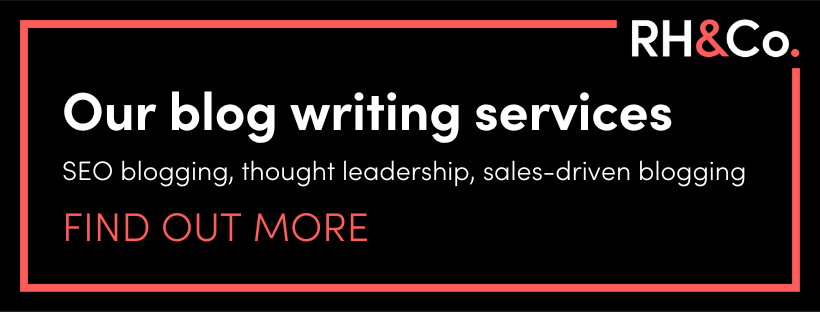
The type of blog post
Not all blog posts are made equal. A listicle (‘5 easy ways to stop your dev project going off the rails’ or ‘7 reasons why we think open source publishing is the future’) is far easier to write than a well-reasoned, carefully-researched piece of thought leadership.
This is partly because, even if they’re the same length, with a listicle you don’t need to create a narrative in the same way. You’re essentially creating 5 or 7 smaller chunks of copy, sandwiched between an intro and an outro. Much quicker to pull together.
Whether you’re weaving in quotes from contributors
If your blog post is styled like a journalistic article and incorporates quotes from one or more interviewees, you might find that it increases the time that it takes to write the post.
This is because there’s an art to deciding which bits of speech should be quoted vs reported, and how best to use those quotes to support the article’s narrative. The more contributors there are, the trickier it becomes to create a smooth narrative, especially if you’re trying to give each person fair representation through the article.
Making difficult concepts easy to grasp is an art and takes time.
How sophisticated your audience is
This isn’t as straightforward as ‘the more sophisticated your audience, the longer it will take to write a blog post for them’.
On the one hand, this might be true. With a sophisticated audience, you won’t be able to get away with just bashing out a ‘sort of okay’ blog. You might need to do more research, source better data, be a bit clever or more original with your arguments.
That said, if you’re a subject matter expert and your audience is made up of complete newbies, you’ll have to work hard to explain the complexities of your thoughts without dumbing everything down too much. Making difficult concepts easy to grasp is an art and takes time.
The wider factors that need to be built into your blogging schedule
This is where we go beyond the time it takes to sit at a keyboard, tapping away at a 800 or 1,200 or 3,000 word post. There’s plenty that needs to come before that happens, and a little that happens after that stage.
When deciding how much of your 9-5 should be dedicated to creating content – or whether your freelancer or agency is worth the money you’re paying them – it’s really important to factor these next points in.
Creating a content strategy
To make your blog successful, you need to create a thorough strategy before you make a start on the writing part. This involves having a deep understanding of your audience and working out everything from the problems you’re trying to solve for them in your blog, to the actions you want them to take once they’ve finished reading.
You’ll also need to spend time generating ideas for topics and titles for the blog. This might include plotting possible titles along the customer buying journey to ensure you’ve covered each stage, as well as researching the keywords and phrases you can realistically aim to rank well for.
Although most bloggers spend just over 4 hours on each post, those that spend more than 6 hours “are 50% more likely to report strong results”.
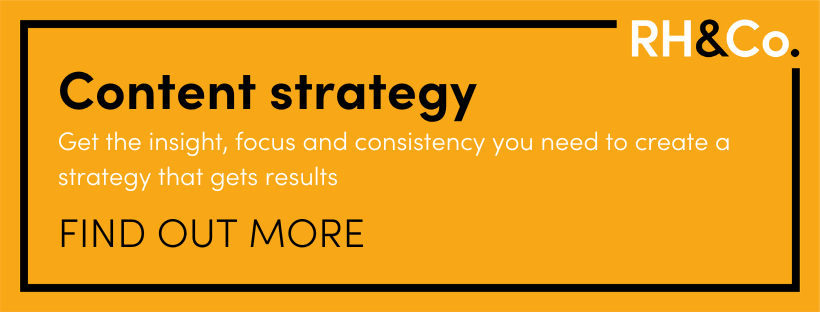
Research and interviews
We touched on research in the first section about writing time because there’s a good chance that during the writing process, you’re going to have to stop and verify a fact or find a study to back up an assertion. But there’s also that initial, foundational research period where you’re getting to grips with the subject.
Even if you’re a subject matter expert, you’ll need to see what other people are saying, so you can ensure you’re adding to the conversation rather than replicating what’s out there. If you’re a marketing lead with other subject matter experts to interview, this will take time too, especially if they’re hard to pin down.
Optimising and linking your content
Blogging is great for SEO but for it to be truly effective, you need to put the time into optimising your content. Even if we bypass activities like keyword research or creation of an SEO strategy, you’ll still need to think about how and where you can insert the right keywords, something which we find is best to do after you’ve written an audience-focused first draft.
Adding internal links is another win (note we didn’t say quick win) for optimisation. Wherever your new blog touches on another piece of content you’ve written, make sure to find that link and insert it. It can take a little bit of time but it’s worth it for the SEO points.
And the rest…
Once you’ve done all of this, you’ve still got a bunch of other stuff to factor in. Uploading the copy to your CRM. Adding imagery. Doing a final proofread to catch those errant typos. All pretty simple tasks but they add up, and they need to be on someone’s to do list.
A final word to those commissioning blog content, internally or externally
So let’s recap. Writing a blog post takes an average of 4 hour, 10 minutes. If you assume that someone works a 9-5 day with an hour for lunch, that’s 59% of their day creating that one blog post. Add on all the other influencing factors, from creating an effective content strategy to optimising those posts, you can see that blogging isn’t something you can fit into someone’s schedule as an afterthought.
Blogging isn’t a low level task you can ask the admin person to do. Your subject matter experts can’t just rustle up a bit of thought leadership at a day’s notice. If you’re going to blog for your business you need to do it consistently, with a strategy in place, and you have to give it the time it deserves.
And here’s the thing – keep scrolling through the Orbit research and you’ll come to a very compelling statistic. Although most bloggers spend just over 4 hours on each post, those that spend more than 6 hours “are 50% more likely to report strong results”. Putting in the time to write great quality content is well worth it.
Why do so many marketers think of completely different things when they think of story? And why do so many get confused and miss the point? Our #EditorInResidence, Sam Whitlock, untangles the knot and shows you how brand narratives, anecdotes and tales can help you resonate with an audience.
Let’s start with the inevitable anecdote…
Approximately four and half years ago, I was dead set on joining a copywriting agency. No one was hiring in Bristol or anywhere near it, so I had to send some speculative applications. And because I was basically emailing people to pay me to write, these emails had to be damn well crafted, right?
How did the speculative email I sent to Rin Hamburgh & Co begin?
The first line started thus:
To the team at [name of RH&Co competitor]…
I was off to a flying start.
It was a copy-paste email with word-tweaks. I had sent something similar to another dozen agencies but the only email with an error on it – with one crucial word-tweak missing – was sent to RH&Co and addressed to someone else.
I noticed the error the moment I sent it, and I wrote the application off as a loss.
In the next week, only one of the dozen agencies got back to me. Rin wanted to have a chat. And a little while later, I found myself working as a copywriter at RH&Co, which was then barely a year-old company.
It was like getting away with murder but perhaps without the same level of blood guilt. Didn’t they notice I addressed my application to the wrong company?
A few months go by… I’m at some entrepreneurial award event or other, with the RH&Co gang – there were just four of us back then – and Rin turns to me, wine in hand, and says, “So… you know you wrote the wrong company name on your first email to us?”
There was a moment… and then we both burst out laughing.
In her words, all that mattered to her was that my application was “well-written”, so she decided to give me a chance – and a ribbing months later.
End of anecdote
What’s the purpose of me telling you that story? To show that we don’t take ourselves too seriously at RH&Co? To show that we value good writing over perfection? To show that we’re human?
If we made that anecdote into a video, we’d probably be unlikely to end it with a RH&Co logo and our strapline: You don’t need many words, just the right ones. Unless we were being very ironic.
I’ll tell you what it’s not: a lead gen narrative or an advert. It’s not an analogy and nor is it a precursor to a pitch that everyone needs an editor (although they do). And in case you were wondering, I don’t have any tech to sell that will stop you from making dumb mistakes in your emails.
What it is, is a story. And many brands have forgotten what that means.
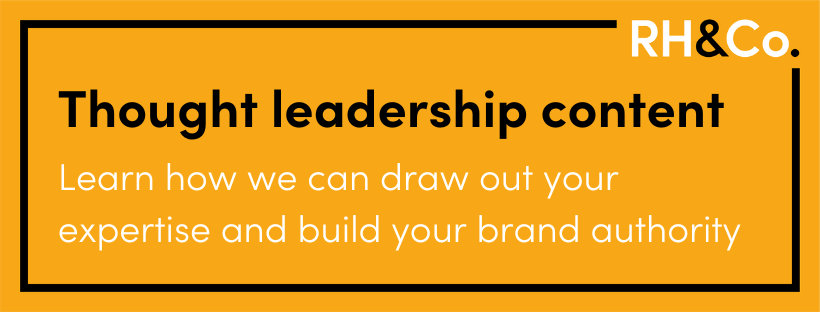
The myths of storytelling
In the marketing and business world, almost everyone has a take on storytelling. Usually people speak of story as some kind of blend of common sense and neuroscience, and they sometimes elevate marketing to something bordering on mysticism.
Here are some of the lines you can stumble across out there.
- “Storytelling is an art. Not a process, method or technique.”
- “A brand is a story.”
- “Stories constitute the single most powerful weapon in a leader’s arsenal.”
Depending on who is making the case, they’ll usually throw in the thought that we’ve been telling stories since the dawn of time – back in the good old days of sitting around campfires, eating wild berries and looking for inspiration to hunt the next mammoth.
Someone will probably say this means stories are the primordial way to do inbound marketing. Eventually someone, either a marketing guru or an ex-producer from the BBC, lays down their ace: Stories make us human.
Which is all fine and well. But then marketers draw the wrong conclusions…
Great delivery with no self-disclosure and people still won’t feel connected to you. Too much self-disclosure without the right delivery and you’ll simply sound like you’re oversharing.
Brand narrative and storytelling are not the same
Many marketers talk about story but usually they’re talking about something else entirely.
They often talk about:
- Drawing together the emotions and facts behind your brand
- Communicating the history, future and purpose of your brand
- Telling a cohesive narrative consistent across all communication
Which sounds like solid marketing practice, you’d probably agree.
All the same though, this sounds pretty different to the kind of stories I grew up reading. In fact, I think they’re describing a different beast altogether.
Brand narrative.
Marketers, brand builders and consultants frequently use the term brand narrative interchangeably with story, and it gets pretty confusing.
Now, before we move on… let’s agree that brand narrative is essential for brand building. It’s core to both your consumer value proposition and your employee value proposition. If you do brand narrative really, really, really well, it can even help you disrupt a market or, as some leadership consultants tell us, transform the culture of an organisation.
But… contrary to what people on the internet might tell you, this is not the kind of storytelling that ‘makes us human.’ It’s not the kind of tale that traces its roots to the pre-neolithic age, and it doesn’t work neuroscientific-magic on the brain (at least not the kind people usually cite).
While brand narrative is an important part of clarifying and communicating your message, no consumer or business audience worth their salt is going to lower their guard enough to let brand narrative impact their heart and soul.
Here’s why.
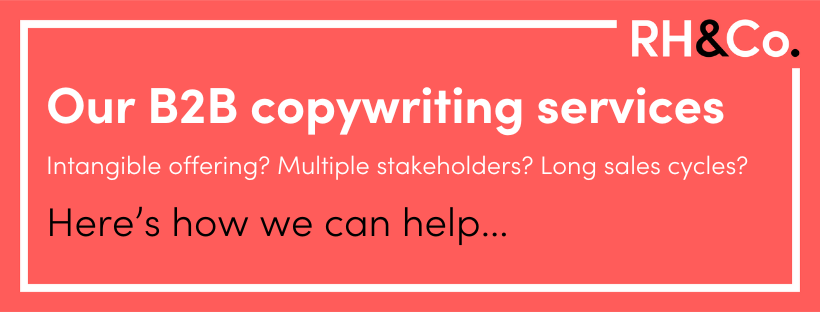
Stories are the property of humans, not brands
The Cambridge Dictionary definition of a story is “a description, either true or imagined, of a connected series of events.” And as far as I can deduce there’s two types of ‘descriptions of events’ that fall into quite a different category to brand narrative.
- A human account
The first type of story – a human account – is someone’s personal, true experience of events. This is what fuels many journalistic ‘stories’ and feature articles. These are the kind of personal stories that friends exchange when they haven’t caught up in a while, or that pass down through familial generations, or that CEOs publish in memoirs.
This type of story is powerful because it’s real. It gives an audience a glimpse of a lived experience, which in this post-modern era can often speak louder than statistics.
A human account is made more or less powerful by two factors:
- Self-disclosure: a person reveals personal information that gives you a sense of intimacy with them.
- Delivery: the context, timing and tone of what you say. You can disclose the same personal detail with humour or anger, whimsy or weight.
Great delivery with no self-disclosure and people still won’t feel connected to you. Too much self-disclosure without the right delivery and you’ll simply sound like you’re oversharing.
Say the right things at the right time, like a comedian who has honed their routine, and you’ll achieve higher levels of ‘interpersonal neural synchrony’ – associated with quality communication and leadership in a group.
A brand is not a person to feel socially connected to, a brand cannot self-disclose anything that’s not good PR, and audiences are fully aware that most of the time, when a brand starts telling a story of tension, they are being sold to, subtly or not.
- A story of tension
The second type of story is characterised by friction, uncertainty, and a sense that something hangs in the balance.
This is the preoccupation of novels, bio-pics, and stage magicians like Michael Weber, who first said “whoever tells the best story wins.” It’s the kind of story that has characters or players, and a conflict that propels its audience forward to find a sense of catharsis.
A story of tension is the kind of tale that works magic on the brain. A narrative with a dramatic arc can actually release oxytocin, the same chemical that is released when your brain tells you ‘this person can be trusted.’ It’s why we can, time and time again, feel so deeply and empathetically for the fictional characters we get to know.
Really, this is the domain of art, media and entertainment, not marketing, PR and business growth. For a tale of tension to work, there needs to be a sense that something could go wrong… not a sense that a product could be revealed.
Some companies do pull it off though. For instance, Xbox’s docuseries Power On takes you blow by blow through the good, the bad, and the ugly history of the company in a startlingly unfiltered fashion. Likewise, Salesforce’s The Shift pulls back the curtain on a few high growth companies as they try not to crash on the hairpin bends of market change.
Here’s the thing: stories of tension are always, always, always about people. Or an animal, alien or anthropomorphic creature that an audience projects personhood onto. They’re not about ideas or products or even putting a hypothetical customer at the heart of the story (great for brand narratives, rubbish for tension), and so we come to a sticky point.
Why brands fail at storytelling
Maybe stories do make us human but no one is going to mistake your brand for a human.
A brand is not a person to feel socially connected to, a brand cannot self-disclose anything that’s not good PR, and audiences are fully aware that most of the time, when a brand starts telling a story of tension, they are being sold to, subtly or not.
The 2022 Edelman Trust Barometer UK report reveals that 60% of people believe businesses only make commitments to support their marketing efforts, and their perception of the arc of your story is going to be similar.
The presence of brand will likely create a halo effect that reduces the ability of an audience to get lost in the story and be affected by it.
But not all is lost!
The same Edelman report shows that trust in people (including technical experts and subject authorities) is high, and that has major implications.
There’s an opportunity here for:
- User-generated content
- Articles authored by experts
- Employee-generated content
- Influencers
- Interviews
Individuals have the most trust right now, and they’re also the ones who sit at the heart of effective stories. They can present real lived experiences and true tales of tension, and if you can put these in front of your audience’s eyes, you’re far more likely to see emotional resonance and dramatic results.
That’s not to say you can’t give the straight sell or the brand narrative drip feed, and it doesn’t mean you can’t throw your logo and strapline up at the end of a high budget ad. All these things still have their place… but if you want to see the kind of audience connection that marketers have been trying to create with stories for years, you need to pull back a second.
Behind your brand are people. They’re the ones with a story your audience might want to listen to… it’s up to your brand to not get in the way.
Sell the sizzle, not the sausage. It’s a (somewhat) useful shortcut that sums up the importance of focusing on benefits over features. But have marketers become too obsessed with pushing benefits? Are we risking becoming the fluff merchants that the rest of the world often dismisses us as?
The truth is that when you’re buying a sausage, you almost certainly do want to know whether it’s 65% pork or 85%. You want to know if it’s Lincolnshire or Cumberland. You may want to know if the ingredients are locally sourced, or organic, or gluten free.
All of these are features, and they’re all important.
The same goes for service-based businesses, or those in the B2B space. It’s all very well to promise that your offering will save people time, money or effort (or all three) but everyone else is promising the same thing.
If you want to get people to part with their cash, you need to be able to talk about how you’re going to do this. Otherwise, you’re just churning out that marketing fluff.
If your reader isn’t in the market for a sausage, then going on about the quality of your ingredients or the fact that they’re locally sourced isn’t really going to be that helpful.
TL:DR
- Why are features important?
- When to talk about features vs benefits?
- A quick note about the difference between sausages and software
- Lumina: a real life example
Why are features important?
Buyers – of sausages and of software – are increasingly sophisticated. We have access to so much more information today than we ever have. We’ve seen marketing done well. And we’re not going to be fobbed off with vague promises any more (if, indeed, we ever were).
There’s too much marketing out there that tries to engage people in this kind of conversation:
“Hi Mx Prospect, did you know we can help increase your team’s productivity?”
“Sounds great, how?”
“By improving efficiency!”
“Yes, but how?”
“Streamlining processes! Boosting morale!”
“Sigh…”
We’re not saying you need to ditch the benefits messaging. Benefits help your audience understand how the features you’re selling will change their lives for the better. But without features to back them up, they’re too vague to get real results.
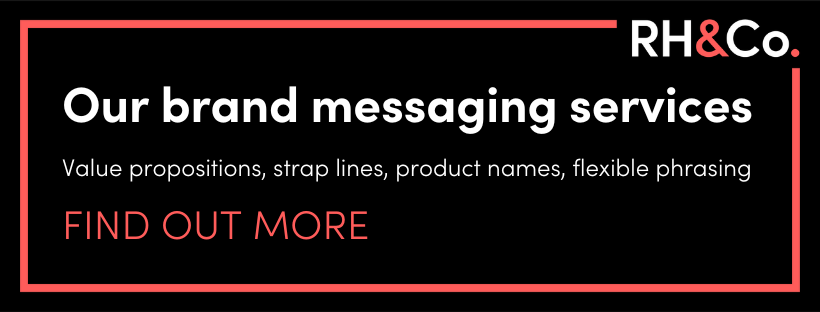
When to talk about features vs benefits
When it comes to features vs benefits, it’s important to think about the ‘when’. To keep running with a simple analogy, if your reader isn’t in the market for a sausage, then going on about the quality of your ingredients or the fact that they’re locally sourced isn’t really going to be that helpful. They’re not hungry, they don’t care.
At this early stage of the buyer journey, you do need to focus on the benefits. Paint a picture of a sunny garden, bbq crackling away, music blaring, a couple of beers and the sizzle of sauces on the grill. Better yet, go a step further and hint at the stresses of life slipping away, or key relationships being strengthened at that outdoor gathering (these are the real benefits, after all).
Now your audience is interested. Now you can talk about the features of your particular gluten free, locally sourced, 95% organic hand-reared pork sausage.
This concept is brilliantly summed up in Watertight Marketing by Bryony Thomas. She talks about the ‘logic sandwich’, which starts and ends with emotion but contains a healthy portion of meaty facts in the middle. (Whether you’re a marketer or founder, if you haven’t read it, you really must.)
A quick note about the difference between sausages and software
It’s also worth pointing out that there’s a pretty big difference between buying a packet of sausages and a new piece of software for your multinational organisation. Not least the amount the buyer is going to be spending.
In the latter case, the buyer journey is going to be an awful lot longer and more complex, with a far greater need to go beyond the fluff. Shouting about how you bring products to market faster, increase sales efficiency, or save time on back office admin won’t get more than someone’s initial attention.
What are you going to do next? How will you help your audience to become increasingly interested, to evaluate and even trial your offering? You’ll need to dig deep into the features at some point and, if you don’t, you’ll lose their attention.
By all means tie those features back to the benefits they deliver – gluten free sausage ingredients that mean little Susan doesn’t feel left out at the family BBQ, sustainably sourced pork that’s better for the environment – but don’t focus on the benefits at the expense of the features. Educate people on how one impacts the other. Give them the tools to make a good decision for themselves.

Lumina: a real life example
The Lumina employee benefits platform does a great job of tying together logic, emotional appeal and specificity. Their home page (yes, we wrote it!) says this:
Great benefits don’t just look good, they do good.
Lumina brings together a curated selection of sustainable benefit options in one easy-access online employee platform. So you can show your employees you care about them, the planet and the people who live on it.
Here, in one fell swoop, Lumina summarises what their audience is buying (an ‘easy-access online employee platform’) and what makes it different to competitors (‘a curated selection of sustainable benefit options’). Plus they drive home the associated benefits: ‘show your employees you care about them, the planet and the people who live in it.’
In short, sell the sizzle but don’t forget to be clear about what makes your particular brand of sausage better than the next manufacturer’s. Tell people how you’re going to deliver the benefits you promise and you’ll take your marketing beyond the fluff.
